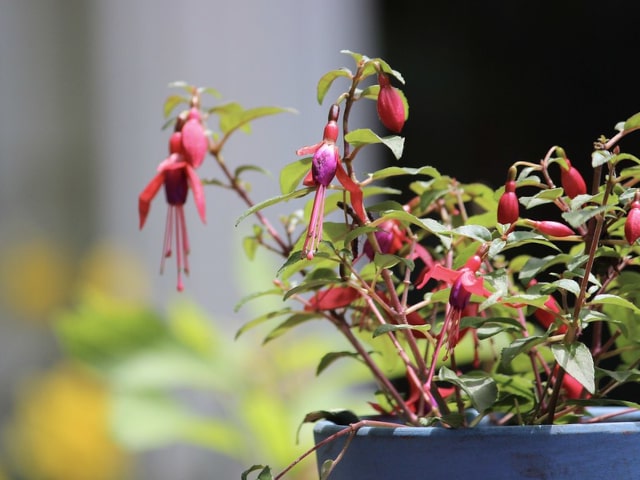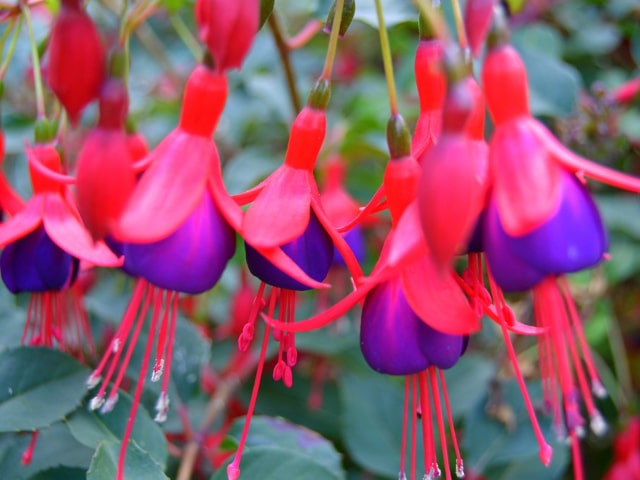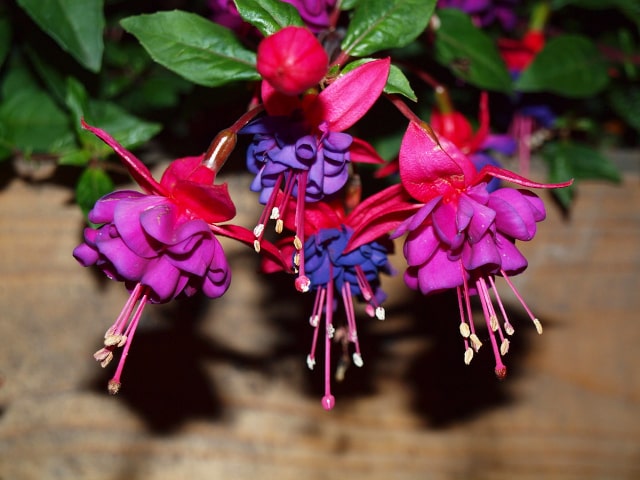
If you wish to grow Fuchsia plants, you need to provide adequate growing conditions. These plants are sensitive to climatic changes so this is one thing to pay attention to. The good news is that Fuchsia plants are not difficult to grow, as long as you provide them with all the major growing conditions they need.
Important Growing Conditions
Despite concerns that some people have, Fuchsia plants are not difficult to grow. All you need is to give them some attention. You need to make sure to provide your plants with all the important things they need.
Special attention should be given to water and drainage. Fuchsia plants require plenty of water and good drainage, so keep this in mind. Another important factor is the heat. It is important to provide some shelter from strong heat. Also, providing shelter from drying winds is a must.
It is also important to feed your Fuchsia plants with fertilizer throughout the growing season. This will provide your plants with all the important nutrients they need to grow and thrive, so this is yet another thing to keep in mind.
If you wish to grow your Fuchsia plants outdoors in your garden, make sure to pick a spot that is sheltered from hard frost. It is also crucial to pick a spot in your garden that has a good shade. A place that is protected in the shade of high trees or other structures is a good choice in areas with strong sun. Keep this in mind when choosing a spot for your Fuchsia plants: they need shade and protection!
Some of the best places to plant your Fuchsias are north-facing walls of buildings, as well as shaded areas between buildings. These plants should not be left in an open garden. One notable exception is the seacoast, from Monterey to Eureka. Here, you can grow these plants in various places of your garden. In case you live in dry valleys or desert regions it is not recommended to grow Fuchsia plants because they cannot withstand these climate conditions.
Planting Fuchsias in the Garden
Before you plant your Fuchsia plants, it is important to prepare a bed for them in the garden. This is best done by cultivating the ground. This will remove any invading roots. You should add some old cow manure to the soil. In case the soil in your garden is alkaline, make sure to add sulfur. It is also useful to add some twiggy coarse woods' litter to improve the soil's porosity.
You should plant your Fuchsias once the serious frosts are over. Simply set your fresh plants from 4 inch pots to the beds that you have prepared. You should stake them right away with a 4 foot stake. The only exception is if you want Fuchsias to cover the ground. All other uses require you to stake the plants.
As Fuchsias grow, make sure to pinch out laterals on the upright plants occasionally. This will promote side benching on your plant. Also, make sure to pinch out the tops in the dwarf bush varieties. This will keep the plants low and well-shaped.
During the growing season, make sure to provide plenty of water and ensure drainage. You should stop pinching when the buds appear. Also, make sure to feed your plants continuously. Also, keep in mind that Fuchsia plants need shade and protection from heat. This is why choosing the best spot to plant is essential.
How to Care for Fuchsia Plants in Winter
Winter care for Fuchsias is a bit different. During the winter, the plants are resting. This is why you can basically treat them as deciduous shrubs during this time.
Keep in mind that Fuchsias do not need much water during the winter. They practically require just minimal amount of water so it is important to dose waterings carefully. The main challenge during winter is to discourage premature growth of your plants. Growth can happen if you provide too much water to your plants. This is why minimal watering is recommended.
Another thing to remember is that they are able to survive temperatures down to about 35 degrees F. During winter, it is important to keep your plants just above the freezing levels. If it gets too hot, it may also trigger premature growth. This is why it's important to keep your Fuchsia at places that are not too warm.
Some gardeners choose to winter their Fuchsia plants by simply burying them in a well-drained and frost-free spot. Some people even choose to hang them as bare-rooted bundles in cool sheds. These are some of the options if you live in colder areas.
Whatever you do, keep in mind that the goal is to protect your Fuchsias from frost during winter while at the same time preventing them from growing prematurely. There is a fine line here, because higher temperature will trigger the premature growth but too low temperatures will make them freeze.
In the Spring
During the following spring, you can start your Fuchsias. People who have heated greenhouses or well-lit windows may even start their new Fuchsia plants in January or February. However, keep in mind that you should never take these plants outside while there is still chance of frost. Most people will have to wait to start Fuchsias a bit later, in March or April.
During spring, the plants will show ne activity. This is when you should cut them back hard. This will remove frozen or rotted wood on your Fuchsia plants. Pruning can be severe because Fuchsia plants bloom on the new growth so there is no danger of cutting any future bloom. It is best to cut your plant to about 3-4 short branches.
When the plants first show activity they should be cut back hard, removing frozen or rotted wood. If potted, their roots are shaken out and cut back proportionate amount to that of the branches. Pruning can be as severe as desired because the fuchsia blooms on the new growth and there is no danger of cutting off future bloom. We would favor cutting the plants to no more than three or four short branches much as one would prune a maiden rose bush at planting time.
Photo credit: Mara




1 Comments
My Fuchsia has many very small holes in the leaves. I'm wondering why and I'm very concerned. Could you help me please? Thank you so much I live in Hi.